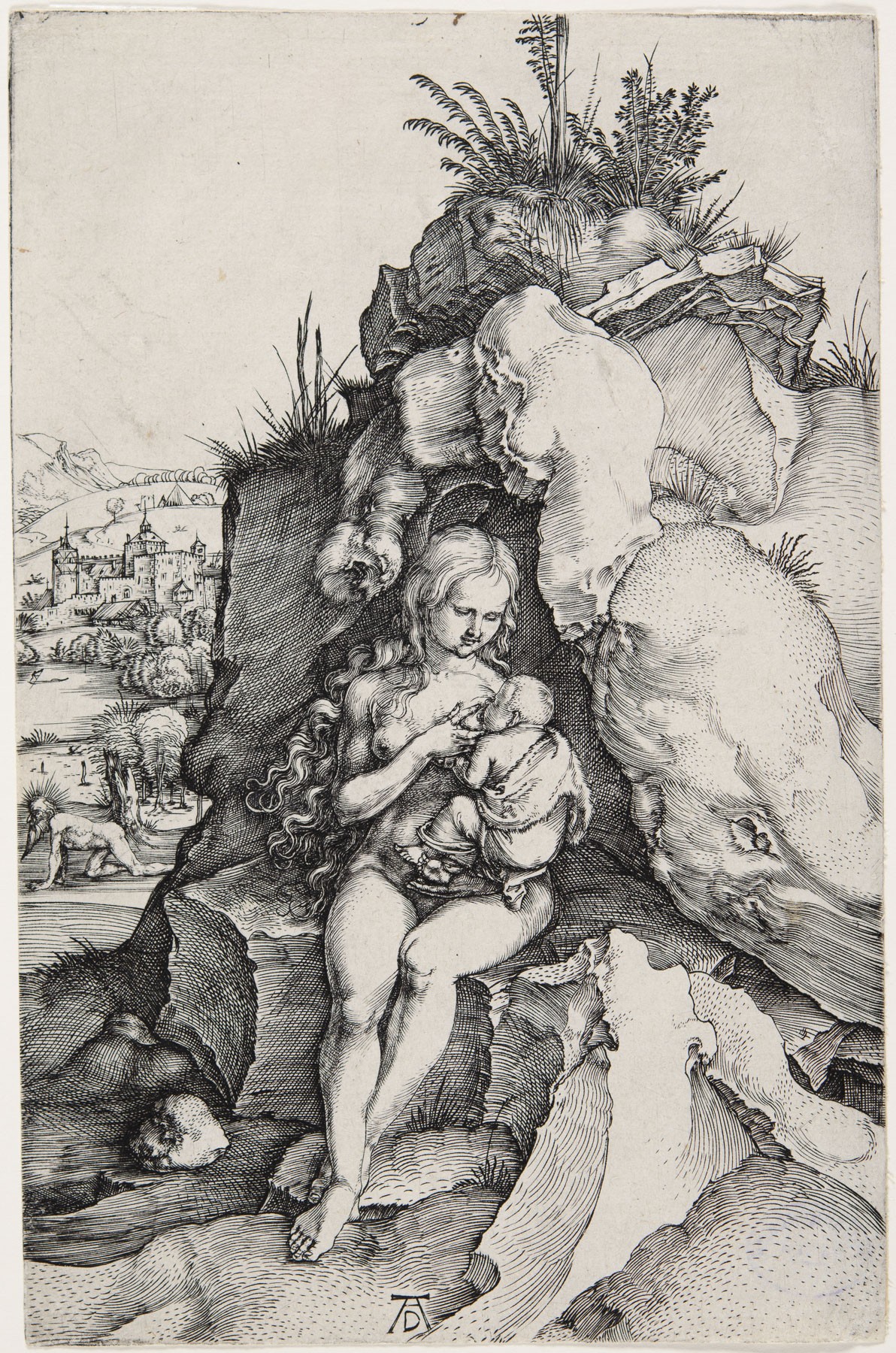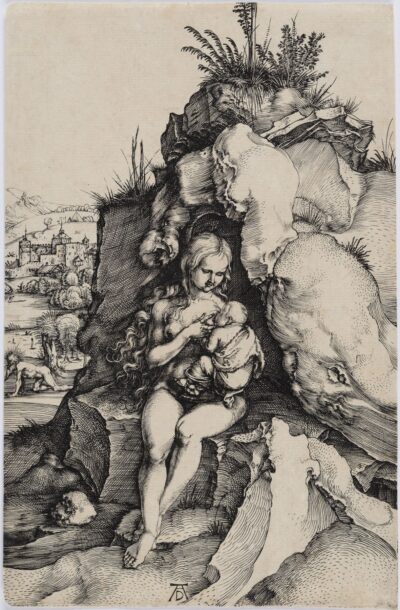The Penance of Saint John Chrysostom
Albrecht Dürer
The Penance of Saint John Chrysostom
engraving
c. 1496
An original Albrecht Dürer engraving.
c. 1496
Original engraving printed in black ink on laid paper.
Signed in the plate with the artist’s monogram lower center.
A clear, clean, richly printed 16th century/lifetime Meder “b-c” (of f) impression.
Catalog: Bartsch 63; Dodgson 12; Panofsky 170; Meder 54.b-c; Strauss 9; Schoch/Mende/Scherbaum 7.
St. John Chrysostom, a poor student at school, in desperation kissed the image of the Holy Virgin. To the amazement of his fellow students he henceforth wore a golden circle around his mouth, and was therefore called Chrysostom (i.e. “golden mouth”). The Pope ordained him a priest at the age of sixteen, but St. John Chrysostom felt unworthy of the priesthood and became a hermit in the desert. There the Emperor’s daughter, having lost her way one day, sought refuge in his cave. Upon her insistence he admitted her and they sinned. As penance he vowed to walk on all fours until forgiven. Years later the Empress gave birth to another child who refused baptism except from St. John Chrysostom. Everyone despaired of finding him, when some hunters brought a strange wild animal to the festivities. The child, seeing the animal, said “You are forgiven.” St. John stood up and shed his long moss covered hair, and the Pope recognized him. The courtiers searched the desert and found the Emperor’s daughter, who had survived the ordeal in the wilderness. (This legend was told in Passional oder der Heiligen Leben, published by Dürer’s grandfather Anton Koberger in Nuremberg, 1488.)




